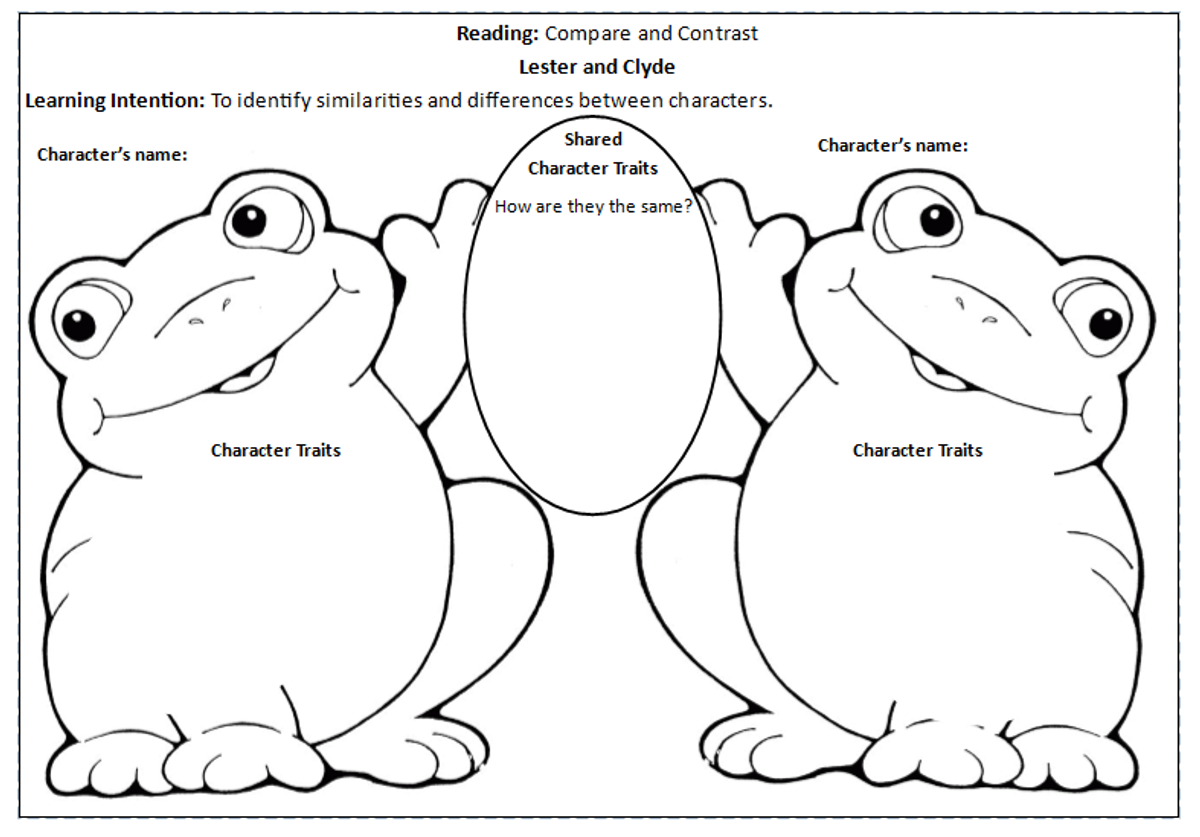Year 2 Bulletin

English
Reading
Language: Expressing and Developing Ideas
Comprehension Strategies: Summarising, Inferring
Learning Intention:To identify similarities and differences between characters.
Learning Experience Overview
As a class, we reviewed our understandings of a Venn Diagram; how it is used as a graphic organiser,
and what it is used to represent. The example above, is simply a pictorial version of a Venn Diagram, as below.
In this activity, students were read the (Big Book) text, ‘Lester & Clyde’ by James Herbert Reece, and were asked to compare the characters of Lester and Clyde, by noting how they were the same and how they were different.
Our emphasis was initially, on comparing Lester and Clyde, and finding the commonality between the two characters – looking to see how they were similar, what characteristics made them the same, noticing in what ways they were alike and what features they had in common.
Then, the students were asked to note down how each character was individual, and different from the other one. We discussed the meaning of traits, actions and feelings and how they might present in a text.
On the double-sided worksheet, areas were specifically allocated for Shared Character Traits, and individual Character Traits, Actions and Feelings, to be recorded.
As we worked through it, particular references were made back to the text, to highlight areas.
For example, taking note of specific actions of Lester’s which caused a reaction from Clyde, and how each character felt as a result:
When Lester poked Clyde (ACTIONS) he felt mischievous (FEELINGS). Clyde fell off the lily-pad (ACTIONS) and he felt angry (FEELINGS)
Prompts/questions
- What sort of character is XXX ? What makes you think that?
- What words in the text tell you that about XXX ?
- How was the character feeling when XXXXXX action took place? How do you know?
Understandings
In texts which describe at least two characters, you will find SIGNAL words to help you.
When we compare, we identify what is the same, using language such as:
- like
- as
- both
- have in common
- similar
- too
- same
- similarly
- like
- alike
- also
- as well as
When we contrast, we identify what is different, using language such as:
- however
- though/although
- but
- instead
- contrary to
- as opposed
- in contrast
- different
- whereas
- yet
What you can do now (to continue the learning at home from this experience)
- Continue to encourage your child/ren to read for pleasure at home, and share their thoughts about the text with you. Do they have a favourite character? What makes that character so special?
- Choose a story with definite characters, even traditional fairy tales are good examples.
- Share the story by taking turns to read paragraphs/pages/chapters.
- Look for adjectives that might describe a character trait, or look for actions that might indicate something more about them.
- Discuss how the character might be feeling, before and after a particular event in the story. Do they change by the end of the story? Perhaps they were timid to begin with, but have to face danger and become brave because of it.
- Look for signal words to help identify similarities and differences. Use some of the language, interchangeably, to compare and then to contrast characters.
- You might like to write a story together, each of you creating a new and different character. Build up a picture of your character with clear adjectives and descriptions, so that the reader can really visualise what they are like, and get a real feel of that character.
Most of all, have fun reading, and writing, together.


